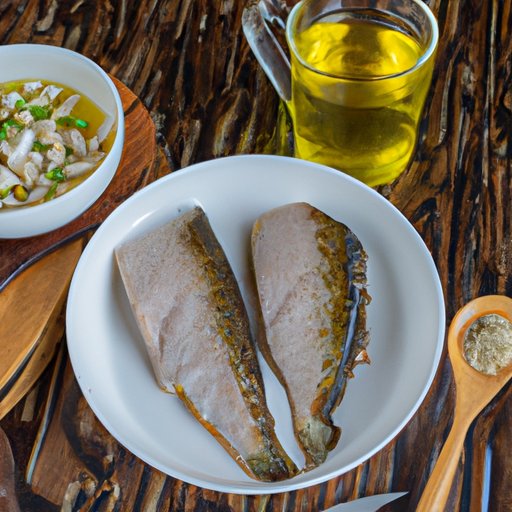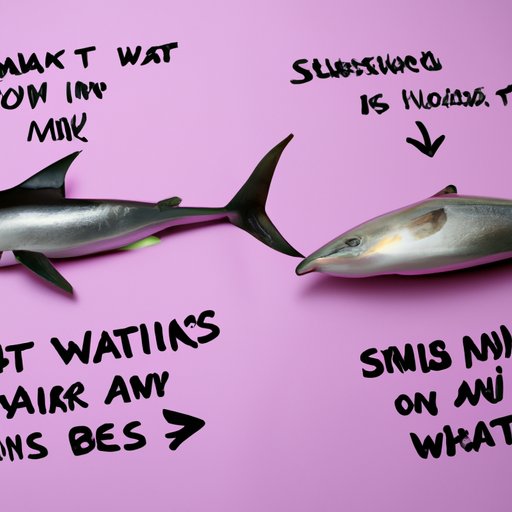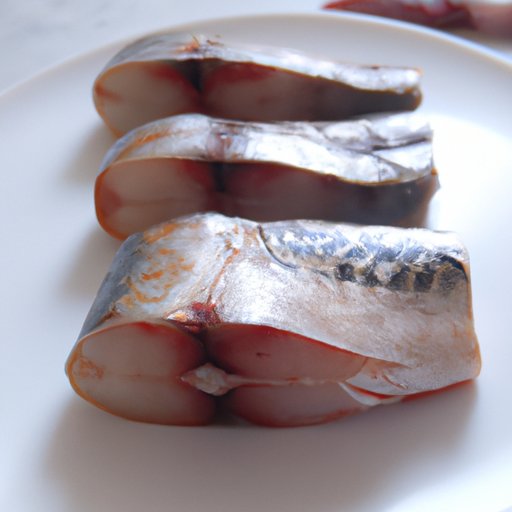Introduction: What is Swai?
Swai (also known as basa, sutchi, tra, and pangasius) is a type of whitefish native to Southeast Asia. It’s a popular and affordable alternative to more expensive seafood such as salmon or cod. Swai is light in flavor and mild in texture, making it a versatile ingredient that can be cooked in a variety of ways. It’s often used in Asian cooking, but it’s becoming increasingly popular in kitchens around the world.
But what about its nutritional value? Is swai a healthy choice for your diet? In this article, we’ll take a look at the nutritional profile of swai, its potential health benefits, how to incorporate it into your diet, and how it compares to other types of fish.

A Nutritional Analysis of Swai
Swai is an excellent source of protein, vitamins, and minerals. Here’s a closer look at its nutritional profile:
Calorie and Macronutrient Content
A 3-ounce serving of cooked swai contains approximately 100 calories, 19 grams of protein, 1 gram of fat, and 0 grams of carbohydrates. It’s also a good source of omega-3 fatty acids, which are essential for heart health.
Vitamins, Minerals, and Other Micronutrients
Swai is rich in several essential vitamins and minerals, including selenium, phosphorus, potassium, vitamin B12, and niacin. It’s also a good source of calcium, magnesium, and iron. Additionally, swai contains small amounts of zinc, copper, manganese, and other trace minerals.

How to Incorporate Swai into a Healthy Diet
Swai can be prepared in a variety of ways, so it’s easy to incorporate into your diet. Here are a few ideas:
Ways to Cook Swai
Swai can be baked, grilled, fried, steamed, sautéed, or boiled. It’s also a popular ingredient in soups, stews, and chowders. When cooking swai, be sure to keep the heat low to avoid overcooking the fish.
Pairing Swai with Healthy Side Dishes
Swai pairs well with vegetables, grains, and legumes. Try serving it with roasted vegetables, quinoa, brown rice, or lentils. Swai can also be served with a variety of sauces, ranging from simple lemon juice to complex curries.
The Benefits and Risks of Eating Swai
Swai is generally considered to be a healthy food, but there are some potential risks associated with eating it. Let’s take a closer look at the pros and cons of adding swai to your diet.
Health Benefits
Swai is an excellent source of lean protein, which is important for maintaining muscle mass and promoting weight loss. It’s also a good source of omega-3 fatty acids, which have been linked to improved heart health. Additionally, swai is high in several essential vitamins and minerals, including vitamin B12, selenium, and phosphorus.
Potential Risks
Swai is often farmed, which means it may contain higher levels of contaminants such as mercury, PCBs, and dioxins than wild-caught fish. To reduce your exposure to these contaminants, opt for sustainably sourced swai whenever possible.

Comparing the Health Benefits of Swai vs. Other Fish
Swai has many of the same health benefits as other types of fish. Here’s a comparison of the nutritional profiles of swai and three other popular fish:
Nutritional Profile Comparison
A 3-ounce serving of cooked swai contains approximately 100 calories, 19 grams of protein, 1 gram of fat, and 0 grams of carbohydrates. Salmon, tuna, and cod all have similar macronutrient profiles, but they also contain slightly higher amounts of fat and calories. All four types of fish are rich in omega-3 fatty acids, selenium, phosphorus, and vitamin B12.
Pros and Cons of Eating Other Types of Fish
Salmon, tuna, and cod are all healthy options, but they can be more expensive than swai. Additionally, salmon and tuna are both more likely to contain higher levels of contaminants due to their longer life spans. On the other hand, wild-caught salmon, tuna, and cod are all excellent sources of omega-3 fatty acids, so if you can afford them, they’re worth considering.
What You Should Know About Swai Nutrition
Swai is an affordable and nutritious option for adding more seafood to your diet. Here are a few tips for making the most of swai’s nutritional value:
Tips for Buying and Storing Swai
When buying swai, look for wild-caught varieties whenever possible. If you can’t find wild-caught swai, choose sustainably farmed varieties. Be sure to store swai in the refrigerator and cook it within two days of purchase.
Making the Most of Swai’s Nutritional Value
To maximize swai’s nutritional value, serve it with a variety of colorful vegetables and whole grains. Additionally, use healthy cooking methods like baking, grilling, or steaming. Avoid deep-frying or breading the fish, as these methods add extra calories and unhealthy fats.
Conclusion
Swai is an affordable and nutritious whitefish that can be prepared in a variety of ways. It’s an excellent source of lean protein, essential vitamins, and minerals, and it’s also a good source of omega-3 fatty acids. When buying swai, look for wild-caught or sustainably farmed varieties. Serve it with a variety of colorful vegetables and whole grains, and use healthy cooking methods like baking, grilling, or steaming.
In sum, swai is a healthy addition to any diet. It’s an affordable and versatile fish that can be enjoyed in a variety of dishes. With its rich nutritional profile and potential health benefits, swai is a great choice for those looking to add more seafood to their diets.
(Note: Is this article not meeting your expectations? Do you have knowledge or insights to share? Unlock new opportunities and expand your reach by joining our authors team. Click Registration to join us and share your expertise with our readers.)
